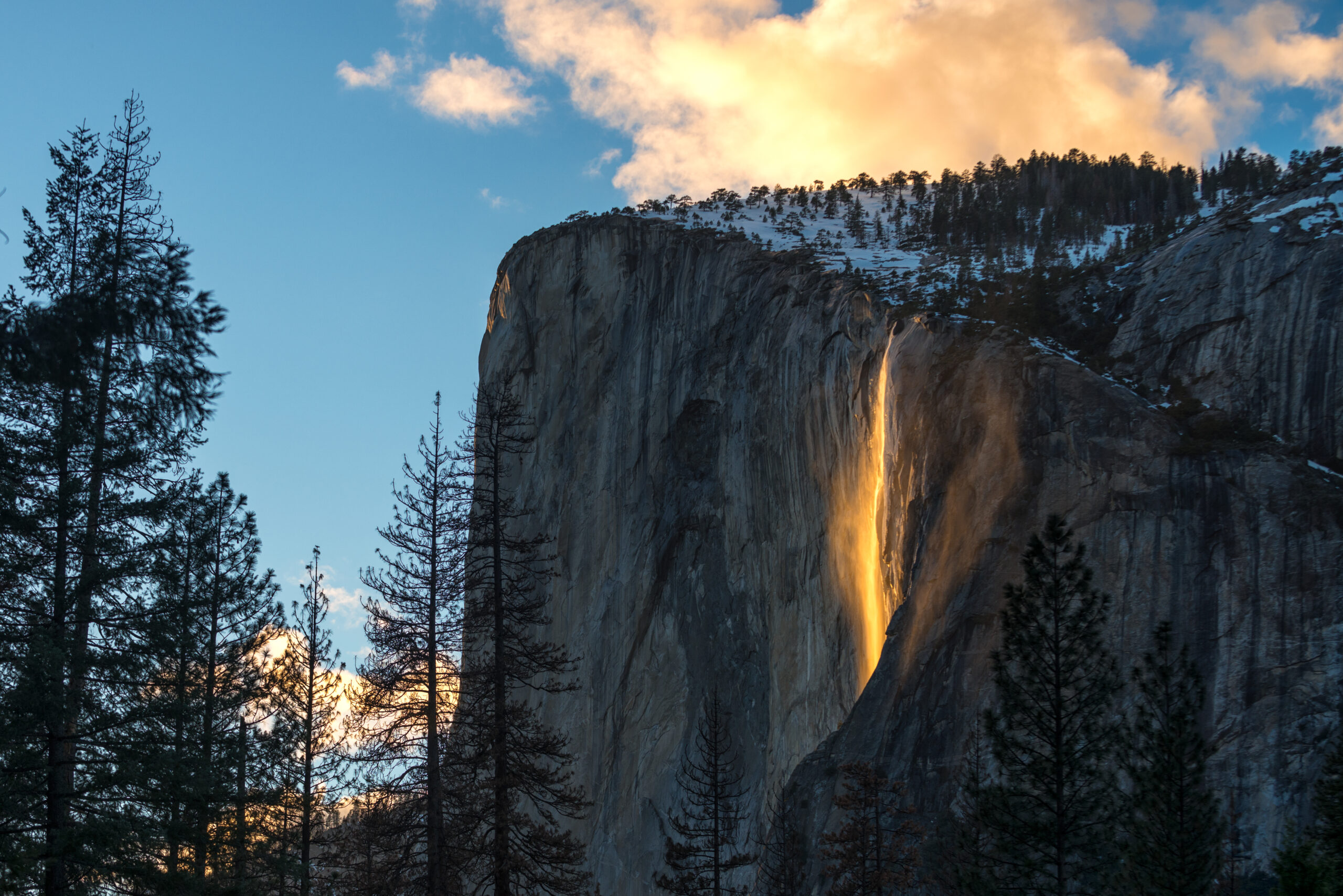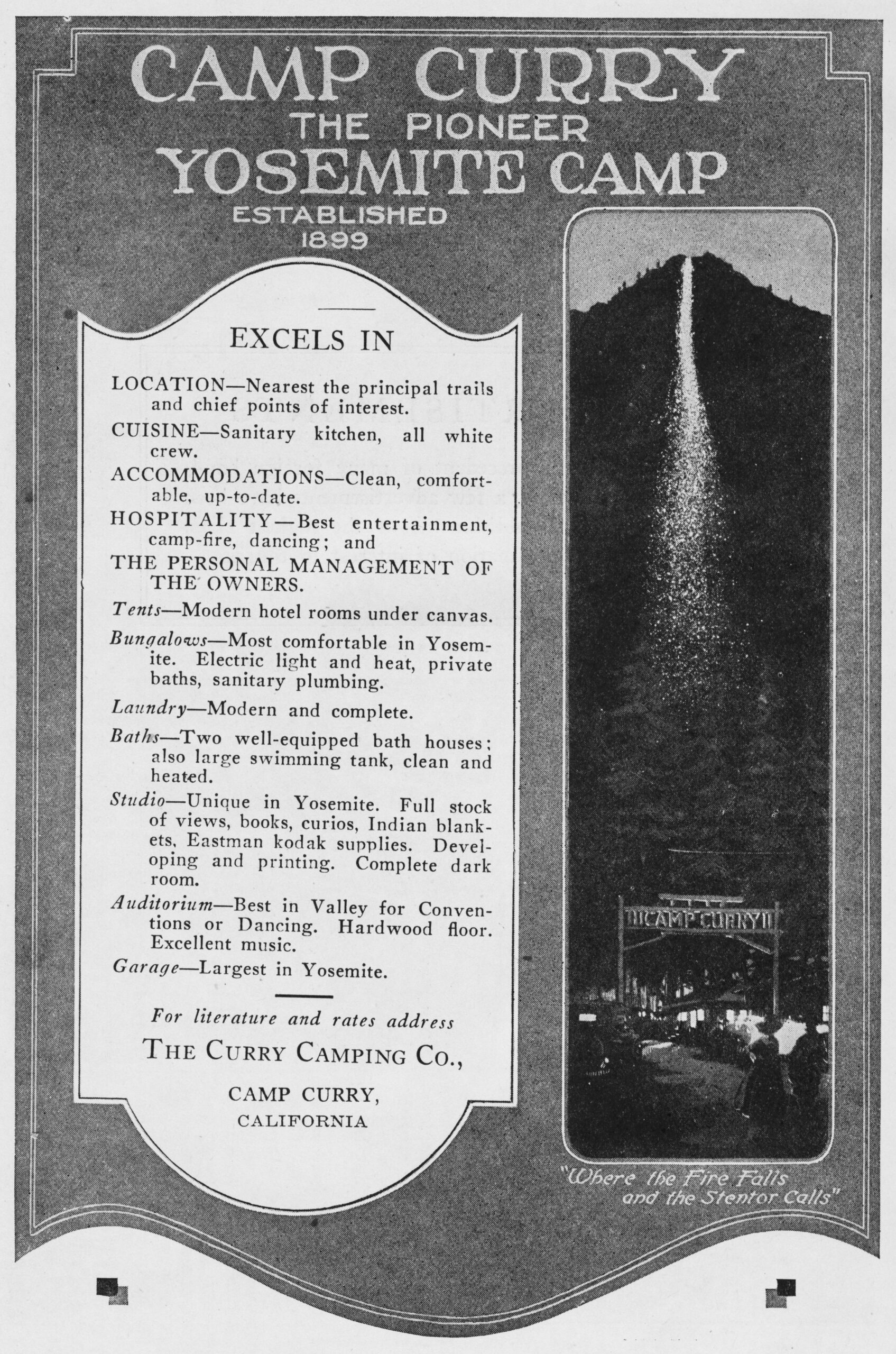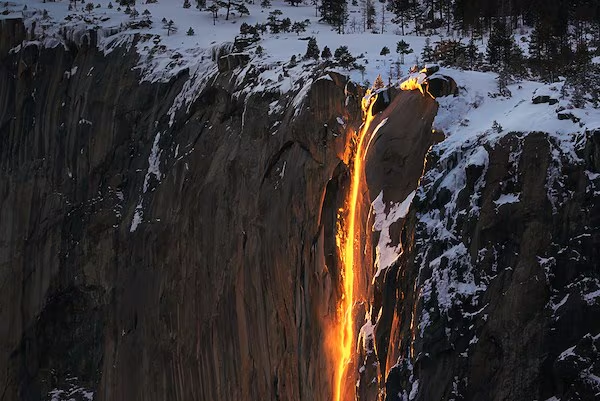A Natural Firefall at Horsetail Fall at Yosemite Valley Briefly Every Year
Hundreds of photographers gather in Yosemite Valley each year for the natural Firefall at Horsetail Fall.
Everyone there has their fingers crossed for the perfect conditions. When it happens, the sunlight streams through the thin sliver of Horsetail Falls, turning it molten orange. Shutters fire as people gasp, cheer, and hug their friends and neighbors.
Here is what you need to know about this otherwise humble waterfall in 2025, and how to catch it in full sensation mode.
When to see Yosemite Firefall?
Horsetail firefall
As the sun sets, Horsetail Fall and the wall behind it are hit by the setting sun.
During mid to late February, the waterfall begins to light up 5 to 15 minutes before sunset. However, you should plan to invest several hours to get to the right place in time.
People visit Yosemite National Park from all over the country for the natural Firefall event. That means that they are finding their spot and setting up their tripods earlier and earlier in the day to get just the angle they want. In order to navigate the parking situation and have enough time to walk out to a place where you can see the Firefall, plan to arrive in the valley in the late morning or early afternoon.
Spend the time relaxing and enjoying the already-majestic Yosemite scenery, and get to know the people around you.
The “Perfect Storm” Must Happen
Like many natural phenomena, everything needs to align for it to become a reality. First, the setting sun must be at the right angle which happens to be around the second week of February. Second, the snowpack needs to be deep enough to generate enough water flow over El Capitan. Third, the sky needs to be crystal clear. We’re talking not a single cloud or haze even near the horizon. And if everything aligns for that perfect moment, it lasts for only a few, fleeting minutes.
With such a short time window and many elements intersecting, it’s a tough sight to see. The popularity of this event has skyrocketed in recent years, from only a few keen observers to hundreds and possibly thousands of spectators each year. If you are traveling to attempt to see this attraction, be aware that there will most likely be weekend reservation requirements. Requirements are usually announced about 4 months prior to the event, so make sure to check back here for more information.
How Did Yosemite’s Natural Firefall Get Global Fame

Horsetail Fall lights up. Photo by Darvin Atkeson
While the natural Firefall event of the Horsetail Fall that happens in February has been around for as long as Yosemite has existed, no one really knew about it until Galen Rowell took the first-known color photograph in 1973 for National Geographic (Interesting aside – in or around 1952 Ansel Adams did capture what was known at that time as El Capitan Fall. But since it was black and white, the unique colorful and fiery event we know of today was not conveyed). Now with the advent of digital photography and social media, this helped propel the ephemeral event into stardom.
The Original Firefall At Glacier Point
For almost a century nightly bonfires created at Glacier Point that were pushed over the cliffs toward spectators located in Curry Village below. The idea originated inadvertently in 1872 with James McCauley, the owner of the The Mountain House at Glacier Point.. Every night during the summer, he would build a campfire to entertain his guests. To extinguish the fire, he would kick the smoldering embers over the cliff. It didn’t take long for the visitors 3000 feet down below in Yosemite Valley who saw the embers tumbling down the cliff to request the Yosemite Valley Lodge to see the “Firefall.” And thus, the Yosemite Firefall was born.
 Long exposure of Glacier Point Firefall from Ahwahnee Meadow
Long exposure of Glacier Point Firefall from Ahwahnee Meadow
The “natural” Firefall, is much more natural and of course, rare, depending on a good stream of water flowing over Horsetail Fall, a clear sky and the right light hitting the cliffs at the right time to produce the desired effect.
 Old poster of Camp Curry Firefall – courtesy of Yosemite Archives
Old poster of Camp Curry Firefall – courtesy of Yosemite Archives
While long gone, its memory is still deeply embedded in Yosemite’s history. It’s as if you can still hear the master of ceremonies, the Stentor, in Camp Curry bellowing out the following exchange with the firemaster at Glacier Point…
“Hello, Glacier Point!”
“Hello, Camp Curry!”
“Is the fire ready?”
“The fire is ready!”
“Let the Fire Fall!”
“The Fire Falls!”
It’s Horsetail Fall Not Horsetail Falls
With Yosemite being the showcase of waterfalls, the definition is important. The difference between a waterfall versus waterfalls is that if the river or creek flows off a cliffside in one unique movement or drop, it’s considered a “fall.” While “falls”, also called “cascades”, generally means there are several distinct drops or falls in a particular section of a stream. A great example to illustrate the differences – Yosemite Falls which is actually made up for three sections; Upper Yosemite Fall (a single drop), the middle Cascades, and Lower Yosemite Fall (another single drop).
The Fiery Glow of Horsetail Fall
Horsetail Fall flows over the eastern edge of El Capitan in Yosemite Valley. This small waterfall usually flows only during winter and is easy to miss. On rare occasions during mid- to late February, it can glow orange when it’s backlit by sunset. This unique lighting effect happens only on evenings with a clear sky when the waterfall is flowing. Even some haze or minor cloudiness can greatly diminish or eliminate the effect. Although entirely natural, the phenomenon is reminiscent of the human-caused Firefall that historically occurred from Glacier Point.

Viewing Horsetail Fall in Late February
Due to the popularity of the event, various restrictions are in effect during mid- to late February each year daily. The dates for 2025 are February 8 through 23. In 2025, a reservation will be required to drive into Yosemite 24 hours per day on February 8–9, 15–17, and 22–23. (Visitors who arrive and pay the entrance fee Mondays through Fridays (except Monday, February 17) won’t need a reservation.) Additionally, parking will be restricted in some areas.
To view Horsetail Fall, park at Yosemite Falls parking (just west of Yosemite Valley Lodge) and walk 1.5 miles (each way) to the viewing area near El Capitan Picnic Area. If this parking is full, park at Yosemite Village or Curry Village and use the free shuttle (which stops at both) to get to Yosemite Falls parking/Yosemite Valley Lodge.

For more information about Horsetail Fall and parking please visit the NPS Website.

